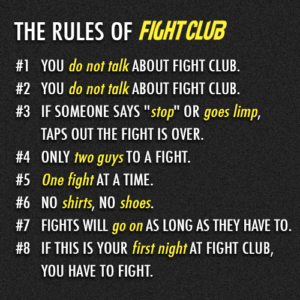I’m a big podcast listener. It’s one of the reasons we started HR Famous because we loved the format! One of my favorite podcasts to listen to is The Prof G Show with Scott Galloway.
If you aren’t familiar with Scott Galloway he’s a New York University professor of marketing and hugely popular. He’s a liberal and rails openly against Trump and also his own industry, Higher Education. I’m a moderate and he’s so freaking smart, I could care less about his political leanings, I just get smarter listening to him.
Besides being a professor, he has started and exited a few technology companies, sits on boards, has school-aged kids, and talks a ton about the stock market.
On a recent pod, Elitism: Money vs. Influence, he gave his top 3 attributes the top-performing employees of the companies that he has started. These are:
- Most likely Female. “First they were female. If they were male I couldn’t say this but it’s okay because as long as you are biased for underrepresented communities your okay, but we try and ignore that…” (42:03 in the pod)
- Graduate from a world-class university. Ivy League, Penn, Michigan, Stanford, Berkley, Vanderbilt, etc. “Better schools matter…more applicants…start with better core human capital…better screening.”
- Athletes are very successful. They understand teamwork, discipline, they can endure and push themselves harder. “Someone who can finish an Ironman isn’t lazy”, says Galloway.
So, Professor of NYU, former business owner, and thought leader says it’s okay to be biased in selection.
I’m not sure I agree we should ever be biased in our hiring selection practices, but Galloway points out a reality in our culture. As long as we aren’t biased towards the majority, we will look the other way and ignore it.
What Galloway is saying is not different than how the vast majority of hiring managers are making their final selections. They take a look at past and current performance and they make some educated inferences about what those top performers have in common. Based on this knowledge, it will shape their hiring selection. Does this, or could this, lead to bias? Yes.
Does it make it wrong?
That’s the big sticky question, isn’t it?
We want to say, no, it’s fine, continue to hire the females if those are your best performers. But, just because your current females are your best performers doesn’t mean they’ll be your best moving forward, or that maybe one of the males will be even a better performer.
Flip the scenario.
Galloway now tells us that one of the three attributes for high performance is they are “male”. Do we have a problem with this now? Most likely, you do have a problem with it based on hiring equity issues, broadly, but it’s hard to say specifically since maybe this organization doesn’t have gender equity issues.
Want to know what Inclusion is difficult when it comes to organizational dynamics? It’s because what Galloway laid out is exactly what every organization lays out. The difference is, it isn’t always friendly to the underrepresented community.
Like I said, regardless of your feelings on this one subject, Galloway’s podcast is money! It’s on my must-listen to pods each week.
Give me your thoughts on this in the comments?


